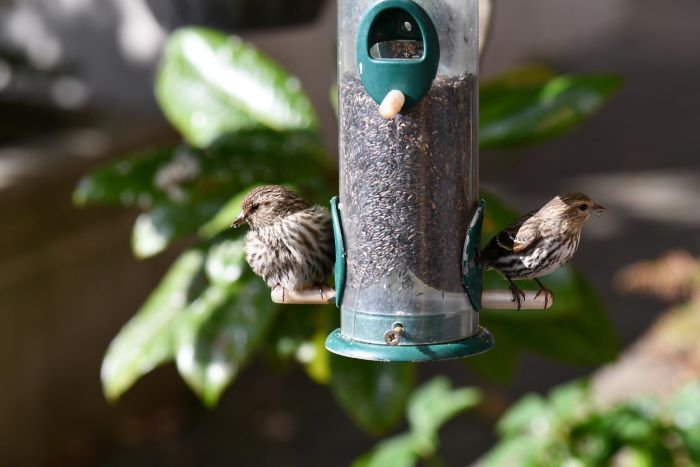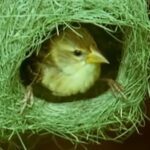Salmonella is a common bacteria that can cause serious illness in humans and animals, including pet birds. Birds carrying salmonella typically don’t show any symptoms, but can still transmit the bacteria to people. In this article we talk about Salmonella Outbreaks in Pet Birds and Prevention Tips for Bird Owners.
What is Salmonella?

Salmonella is a group of bacteria consisting of over 2,500 different strains. Most types cause intestinal infection marked by diarrhea, fever, and abdominal cramps that develops 1-3 days after infection. Though unpleasant, salmonella poisoning usually resolves in 5-7 days without treatment. However, severe infection can spread from the intestines to other parts of the body, requiring hospitalization and antibiotics. At-risk groups like infants, elderly, or immunocompromised individuals have higher rates of dangerous infection.
The bacteria live in the intestines of infected animals, who transmit salmonella through their feces. Humans typically contract it through contaminated food or water, but can also get infected through contact with animals carrying salmonella. Reptiles, amphibians, poultry, and pet birds are common carriers. Proper handling and sanitation practices must be used around infected animals to prevent human illness.
Why Are Pet Birds At Risk?
Salmonella infection is very common in pet birds, with infection rates over 60% in some species. All birds can carry salmonella bacteria even when healthy. Chicks are infected rapidly in hatcheries, and baby birds pass the infection to parents regurgitating food. Contaminated breeding facilities and transport crates spread infection between flocks. Stressed, injured and sick birds also shed higher amounts of salmonella in feces.
Birds hiding illness are another infection source. Because flock prey animals mask weakness, seemingly healthy parrots, finches and canaries could carry and shed contagious levels of salmonella. Owners must assume all birds harbor the bacteria and use precautions.
Symptoms of Salmonella Poisoning
Gastrointestinal signs are the first symptoms of salmonella poisoning in humans. Nausea, vomiting, abdominal cramps and watery, smelly diarrhea develop 8-72 hours after ingesting contaminated food or drink. Dehydration follows diarrhea due to fluid losses.
Fever between 100-104°F is also common. Headache, chills, muscle pain, joint pain, rash or blood in stool might appear too. Symptoms last for 5-7 days typically. Anyone exhibiting severe diarrhea, high fever over 102°F, bloody stool or vomiting for over 24 hours needs medical assessment for dangerous salmonella infection. At risk-groups should also receive prompt medical care.
Infants or elderly infected might have atypical symptoms like fatigue, irritability or poor feeding. Caregivers must seek medical attention if their health deteriorates. Call emergency services immediately for infants with fever, bloody diarrhea, crying without tears, stiff neck or body seizures.
Preventing Salmonella Outbreaks
Using proper precautions and sanitation when handling pet birds or their environments is crucial to avoid salmonella. Here are tips for bird owners to lower infection risks:
Wash Hands & Clean Surfaces
Meticulous hand hygiene prevents ingesting bacteria from touching birds or contaminated objects. Wash hands thoroughly before/after bird handling or cleaning cages. Scrub hands with soap for 20 seconds, cleaning under nails and between fingers. Young children must be supervised to ensure effective hand washing.
Disinfect countertops, sinks or tables holding bird supplies too since feces and dust contains salmonella. Use paper towels or cloths only once before washing to prevent spreading germs. Change clothes after cleaning bird cages before preparing food.
Avoid Kissing/Snuggling
Birds As difficult as it is with adorable feathered pets, avoid nuzzling, kissing or touching pet birds to your mouth. Avoid hand feeding treats too. Salmonella on bird feathers or skin can infect you if touching eyes, nose or lips. Also refrain from eating or drinking around pet birds too.
Use Respirator Masks
Inhaling airborne salmonella bacteria while cleaning bird cages or rooms can also cause infection. Wear N95 respirator face masks while cleaning to prevent inhaling salmonella dust particles. Children should not clean bird enclosures.
Clean & Disinfect Cages
Thoroughly scrub and disinfect cages, feeders and water bottles weekly using diluted bleach. Remove bird droppings, spilled food and feathers using soap then rinse. Next soak cages in a bleach solution of 1 tablespoon bleach to 1 gallon water for 10 minutes before final rinse and drying.
Clean bird rooms too by damp mopping floors with disinfectants. Vacuum carpets but avoid stirring dust clouds. Hard surfaces like walls or ledges can also harbor salmonella from feces and should be regularly cleaned.
Protect Food & Drinking Water
Store bird food like seeds or pellets in rodent/pest proof containers to prevent contamination. Wash food/water bowls daily with hot soapy water then disinfect too. Refrigerate perishable bird foods, and discard old produce if spoiled.
Chlorinate drinking water for birds to kill bacteria. Add one teaspoon bleach per gallon of water. Rinse bleach solution from bowls thoroughly before refilling. Frequent water changing is vital too since bacteria multiply rapidly in standing water.
Get New Birds Vet Checked
New pet birds entering homes should receive vet examinations before interacting with current birds. Stressed birds shed more salmonella in feces so isolation during acclimation to new homes can protect other pets. Testing and prophylactic antibiotics might be prescribed by avian vets too.
Reporting Cases
If multiple family members experience salmonella symptoms, seek medical help and inform local health departments. Some states mandate salmonella infections be reported to trace outbreak origins and prevent further spread in communities. Vets must also report diagnosed bird cases. When cases are connected to retailers, breeders or distributors, infected animal shipments can be halted.
Conclusion
Salmonella bacteria pose health risks for pet bird owners if not cautious. But people don’t have to avoid keeping birds out of infection fears. By using sanitary precautions, risks are greatly minimized. Protect pet birds too by keeping their environments clean. Schedule regular avian vet exams to ensure a healthy flock too. Stay vigilant of salmonella risks, but enjoy the incredible joy and companionship birds provide. With sound prevention measures at home, owners can promote safety for themselves and beloved feathered friends. I sincerely hope you find this “Salmonella Outbreaks in Pet Birds-Prevention Tips for Bird Owners” article helpful.
If you enjoyed this article, you might also read this: Understanding the Migration Patterns of Arctic Terns

Stina is the expert behind BirdFacts.net, dedicated to sharing her passion and knowledge about birds. With a degree in Environmental Science and over 6 years of birdwatching experience, she brings both expertise and enthusiasm to her writing. Stina’s work aims to inspire appreciation for birds and promote responsible birdwatching. Follow her bird-filled journey on Instagram.





